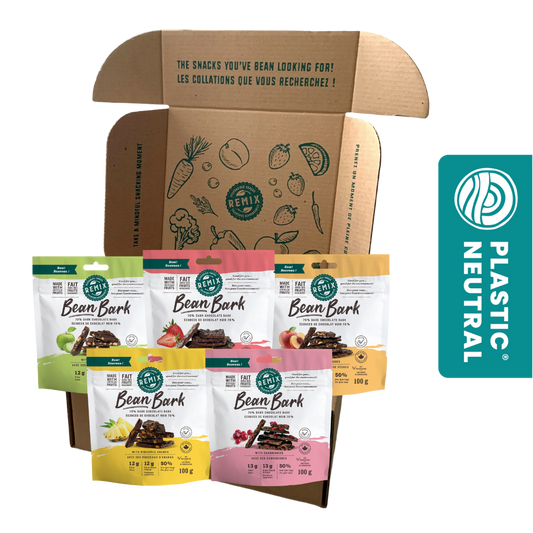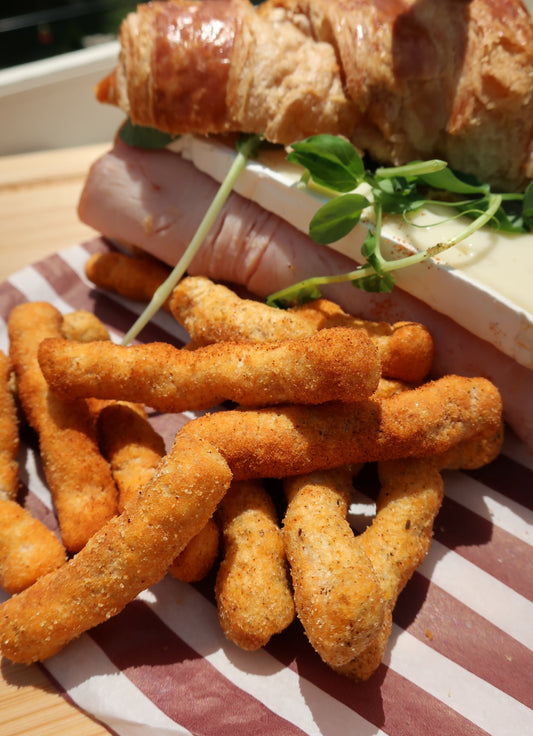
Written by: Megan Hardi, September 2020
From Diet Culture to Intuitive Eating
Diet culture is not a foreign concept as this phenomenon is very commonly tied with the desirability of weight loss. This culture is advertised as a quick answer for individuals to transform themselves into their “best” selves, which is associated with their “skinniest” selves (1). Unfortunately, a lot of individuals do not realize that they are being swayed by diet culture - often the term “diet” becomes interchangeable with “new way of eating” or “cutting out carbs because they’re bad for you”. Diet culture can take the form of restrictive eating, avoiding eating out socially, calorie counting, and even feeling proud when you reject a chocolate bar craving despite really wanting it.
This culture has influenced our minds into thinking we are unworthy if we do not fit the description of someone who is “beautiful” (in this case, someone who is skinny). SPOILER: This is NOT TRUE.
Although diet culture has been around for some time, recently, there have been more and more movements to break free from diet culture. These movements inspire both men and women to reject diet mentality and promote the shift of focus from weight to well-being (2). An example of this is the “Health at Every Size” movement. This shift in focus to your own well-being puts yourself in the driver’s seat instead of allowing peers and social media to dictate your worth based on the way you look. A particular movement that is prevalent in introducing ways you can take hold of the steering wheel is intuitive eating.
Intuitive Eating: the Driver’s Manual
Head on, intuitive eating directly challenges the diet culture. As diet culture often tells us our bodies are our enemies because they do not reflect the best version of ourselves (again, SPOILER: This is NOT TRUE), intuitive eating rebukes this by saying our bodies are actually our best friends.
FUN FACT: The benefits of intuitive eating may not always lead to weight loss, however, research studies have shown that intuitive eaters have experienced improvements in their self-esteem, body image, and their quality of life (3).
Intuitive eating describes a lifestyle that tells you to eat when physically hungry and stop when physically full. Intuitive eaters are encouraged to trust their bodily cues instead of a diet handbook (3). In order to do so, we need to learn how to trust our bodies. This allows us to build a better connection with food and understand that food is meant to be celebrated instead of antagonized. Listening to our body cues is important in establishing a healthier relationship with food, such as eating when physically hungry and stopping when we feel full.
Several principles of intuitive eating include making peace with food. It is dangerous to associate some food as “good” and others as “bad” because this then leads to us labeling ourselves as “good” or “bad” based on whether or not we’ve eaten “good” or “bad” food. Another principle is respecting your body. Trusting your body and bodily cues is one thing, however, it is also important to remind ourselves of just how much our bodies do for us and the beauty of each unique body such as your own. Furthermore, exercise is also a distinct principle of intuitive eating. The same concept applies to building a healthier relationship with food; how can you learn to accept and love your beautiful body as it is if you do not celebrate it?
Intuitive Exercise: the Driver’s Personal Machine
Interestingly, exercise has been linked to restrictive eating of desired foods and eating more as emotional comfort instead of satisfying physical hunger (4). Perhaps this is caused by false motives behind exercise. This similar mindset can also be a result of diet culture; we use exercise as a way to punish ourselves for eating “bad” foods. As a result, we drag our feet to attend HIIT classes we do not want to attend when we would rather attend a yoga class.
REMINDER: Your body is your best friend and not your enemy. Thus, treating your body as your best friend can also include intuitive exercising. This movement mirrors intuitive eating as it includes listening to your body and understanding what it needs. In order to do so, we should refrain from getting caught up in ‘rules’ of how much cardio or strength training needed in a week (5). We should aim to choose activities that not only make us feel energized and excited to celebrate our bodies in the form of movement, but also allowing ourselves to walk out of this celebration without feeling wiped or overly drained.
A perspective that is rarely touched upon when discussing intuitive exercise is rest days. Some days our intuition drives us to run that extra mile, which may leave you feeling proud and satisfied, however, it is also important to listen when your body tells you it needs to rest. Although we constantly want to push our bodies to do better or grow stronger, rest days are vital to ensure we aren’t putting too much stress on our bodies (5). Finding a balance is never easy and it does take time for us to get in tune with our bodies in order to understand what it needs.
Overall, intuitive exercise teaches us that exercise should not be a compensation tool for the guilt of eating “bad” foods. It is more beneficial to do physical activities that you enjoy rather than carrying them out only to burn calories. Many forms of exercise have their own benefits; for example, swimming laps vigorously for only 30-minutes has shown to burn 370-450 calories (6), running for 15 minutes has shown to reduce major risks of depression (7), and the list continues. The most beautiful aspect of intuitive exercising is how we are able to choose which form of exercise benefits both our physical and mental health the most.
On days when we feel energized and ready for a heated sweat session, perhaps doing a HIIT program is what our body needs. While on other days, our bodies wish to withstand more and so we opt to weight lift instead. Other examples of exercises may include hiking, rock climbing, yoga, pilates, zumba classes, and so many more ways to celebrate our bodies!
We should not be afraid to listen to our bodies. Not only do we need to move away from diet culture and encourage intuitive eating and intuitive exercise, but we also need to remind ourselves that our bodies are a gift and we should treat it with kindness as much as we can. So, why not start today? Let’s Move It!
References:
-
Galatola, Lina. “Breaking Free From Diet Culture.” Nourish Mind Body Nutrition, 1 Apr. 2019, nourishmindbodynutrition.com.au/2018/04/04/breaking-free-from-diet-culture/.
-
Raffoul, Amanda. “Breaking Free from Diet Culture on International No Diet Day.” Waterloo-Wellington Eating Disorders Coalition, Waterloo-Wellington Eating Disorders Coalition, 6 May 2019, www.eatingdisorderscoalition.ca/blog/2019/5/6/breaking-free-from-diet-culture-on-international-no-diet-day.
-
Jennings, Kerri-Ann. “A Quick Guide to Intuitive Eating.” Healthline, Healthline Media, 25 June 2019, www.healthline.com/nutrition/quick-guide-intuitive-eating#basics.
-
Moy, Jordan, et al. "Dieting, exercise, and intuitive eating among early adolescents." Eating behaviors 14.4 (2013): 529-532.
-
Mahtani, Nikhita. “Intuitive Exercise: A Workout Plan Based on How You Feel.” Well Good, 4 Mar. 2019, www.wellandgood.com/workout-plan-intuitive-exercise/.
-
Harvard Health Publishing. “Calories Burned in 30 Minutes for People of Three Different Weights.” Harvard Health, 13 Aug. 2018, www.health.harvard.edu/diet-and-weight-loss/calories-burned-in-30-minutes-of-leisure-and-routine-activities.\
-
Harvard Health Publishing. “More Evidence That Exercise Can Boost Mood.” Harvard Health, May 2019, www.health.harvard.edu/mind-and-mood/more-evidence-that-exercise-can-boost-mood.





